Welcome to IDGI blog!! The student perspective of navigating the world of archaeology hosted by Alyssa and Michaela! | Insta: @idigitpodcast | Twitter: @idigitpodcast | Discord: https://discord.gg/T7BPe36 | ArchPodNet: https://www.archaeologypodcastnetwork.com/idigit | Sign Up ➡️ https://linktr.ee/idigitpodcast
Don't wanna be here? Send us removal request.
Text
IMPORTANT PEOPLE IN ARCHAEOLOGY: GEORGE MCJUNKIN

Alright everyone, in honor of Juneteenth, I would like to tell you the story of Mr. George McJunkin, an African American Cowboy and archaeologist!
McJunkin was born into slavery on a ranch in Texas in 1851. His father worked on that same ranch as a blacksmith after he purchased his own freedom; and no sources online can seem to provide any information on his mother.
Growing up, McJunkin learned many skills as a ranch hand and he also frequently interacted with Mexican vaqueros (cowboys) who taught him how to handle horses.
On a night in 1867 he packed up some food, an extra pair of pants, took a mule from his master’s ranch, and set out to become a cowboy. McJunkin had many jobs as a horse and cattle wrangler as well as a manager of various ranches in both South and West Texas, Northeastern New Mexico, and in Northwestern Oklahoma.
It was during this time that he learned how to read and write from other cowboys; but he also picked up quite a bit on his own. He taught himself how to speak fluent Spanish, and how to play the fiddle. He was also very interested in science and history, and educated himself in archaeology.
In the early 1900s McJunkin was offered a job as the foreman on the Crowfoot Ranch near Folsom, New Mexico (yeah THAT Folsom, New Mexico my fellow Prehistoric North American archaeology nerds).
Then, on August 27th, 1908 Folsom was hit with a harsh and heavy rainstorm which ended up causing massive flooding. McJunkin and a friend Bill Gordon were surveying damage to fences along the Dry Cimarron River, and it was in the Wild Horse Arroyo that McJunkin noticed huge bones sitting in the newly exposed sediment.
McJunkin’s life experience allowed him to recognize these bones were not from any modern day cattle or buffalo species, and therefore were probably a significant archaeological discovery. He tried to get the scientific community interested in the site with no luck.
George McJunkin passed away in 1922 at the age of 71 without having known just how significant this discovery was going to be.*
While the realms of American anthropology and archaeology have made significant progress and improvements in the past 100 years (though they still have a long way to go), the disciplines during the early 1900s were inundated with racism and prejudice. Scientific authorities at the time were hard-set in their understanding that Indigenous prehistory only extended approximately 3,000 years B.P. (before the present). This relatively young date range helped to justify academic views at the time that Indigneous peoples were ‘savage’ and ‘uncivilized’, and therefore inferior white western culture.
Several months after McJunkin’s death in 1922 a team of amateur archaeologists ended up excavating the arroyo site and discovered more bones and associated projectile points (projectile point is the general term to refer to spear or arrow heads).
Then, in 1926 the director of the Colorado Museum of Natural History (now the Denver Museum of Nature and Science) J.D. Figgins was shown bones from the site and he proceeded with formal excavations in that same year.
The Folsom site is monumental for how it changed the way western academics understood North American prehistory. These excavations turned up approximately 30 individual skeletons from the extinct bison species Bison antiquus. This is a species that dates from 10,000 to 18,000 years ago.

In the following year, 1927, a skeleton was found with a spear point lodged in situ (in place/in context) between the bison’s ribs (what is known as a Folsom Point). This find meant that prehistoric people existed within the North American continent at least 11,000 years B.P.

Again, there is no way to overstate how significant this site is, and how frankly cool it is that a Black cowboy and former slave was the one to initially find it. Though, I would also like to note that The Denver Museum of Nature and Science does not mention George McJunkin and his association with the Folsom archaeology site that made them well-known; and if the information is present it is not easily accessible.
There are no doubt countless unsung brilliant anthropologists and archaeologists throughout American history, people who have made incredible contributions to these disciplines without ever knowing the true impact they would have.
George McJunkin is certainly one of these people, but as time goes on I am hopeful that his story and importance will be taught alongside all the big names in American anthropology, because his life is certainly one that deserves to be celebrated.
*Brief aside from the author: the word ‘discovery’ never really feels appropriate to me when discussing prehistoric Indigenous sites. I don’t know about anyone else, but to me the idea of ‘Discovering’ seems to imply that Indigenous people didn’t already know a site was there. I am sure many nations did/do know the location of important cultural sites but may not want to disturb them for various reasons. Anyway if you stuck through this mini-soapbox thank you, please continue on with your regularly scheduled reading.*
Refs
“George McJunkin and the Discovery That Changed American Archaeology.” Archaeology Southwest, 20 Oct. 2020, www.archaeologysouthwest.org/2015/02/23/george-mcjunkin-and-the-discovery-that-changed-american-archaeology/.
“George McJunkin: Standing at the Intersection of Black History and American Archaeology.” Archaeology Southwest, 5 Mar. 2021, www.archaeologysouthwest.org/2021/03/04/george-mcjunkin-standing-at-the-intersection-of-black-history-and-american-archaeology/.
Matt Doherty, Matt. “George McJunkin – Black Cowboy & History Changing Amateur Archaeologist.” Legends of America, www.legendsofamerica.com/george-mcjunkin/.
Peterson, Heather. “George McJunkin (1851-1922) •.” BlackPast, 25 Feb. 2020, www.blackpast.org/african-american-history/mcjunkin-george-1851-1922/.
---------------------------------------------------------------------------
About the podcast: The I Dig It Podcast was created by Alyssa and Michaela in March of 2020. Our goal for this podcast was to provide archaeology enthusiasts with insight into the student perspective of navigating the world of academia and the job market for archaeology and anthropology. Guests on the podcast include people from all different parts of their career, including highschool, undergrad, grad school, post doc, and early career!
Where to Find Us:
Insta: https://www.instagram.com/idigitpodcast/
Twitter: https://twitter.com/IDigItPodcast
Discord: https://discord.gg/T7BPe36
ArchPodNet: https://www.archaeologypodcastnetwork.com/idigit
How to get involved: Sign up to be a guest or to be featured on our social media pages ➡️ https://linktr.ee/idigitpodcast
#archaeology#anthropology#juneteenth#african america history#american history#prehistoric#prehistory#anthropologist#archaeologist#research#education#black history#cowboy history#vaqueros#archpodcastnetwork#archaeology podcast network#history#folsom#new mexico#spear heads#lithics#projectile point#bison#extinct species#cool history
134 notes
·
View notes
Photo

Happy Pride from I Dig It!!! Today we’re highlighting some of our LGBTQIA+ community members and a couple brilliant scholars who helped shaped the realm of queer anthropology! 🎉🏳️🌈🏳️⚧️❤️🧡💛💚💙 🏳️⚧️🏳️🌈🎉#pridemonth #pride #archaeology #archaeologist #anthropology #anthropologist #womeninanthropology #queeranthropology #queerstudies #idigit #podcastersofinstagram #podcasts #archaeologypodcastnetwork #education #archaeologylife #peopleinanthropology #rainbow #alphabetmafia https://www.instagram.com/p/CQESqdvrfEO/?utm_medium=tumblr
#pridemonth#pride#archaeology#archaeologist#anthropology#anthropologist#womeninanthropology#queeranthropology#queerstudies#idigit#podcastersofinstagram#podcasts#archaeologypodcastnetwork#education#archaeologylife#peopleinanthropology#rainbow#alphabetmafia
4 notes
·
View notes
Text
Women in Anthropology: NAKANE CHIE
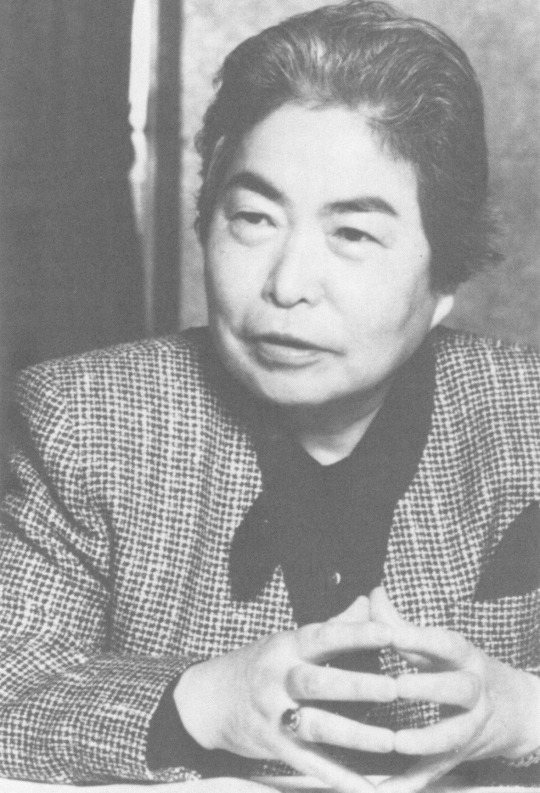
Nakane Chie was born in Tokyo, Japan in 1926 and spent her childhood in Beijing, China. This greatly influenced her interest in cultural comparisons since after returning to Japan she found herself noting the differences between Japanese and Chinese atmospheres and behaviors.
She has an incredibly robust list of institutions she attended, studied, and worked at.
Nakane first attended Tsuda College for undergrad as an anthropology major and graduated in 1947. She was interested in cross-cultural comparisons, and specifically focused on China and Tibet during her graduate research at the University of Tokyo in 1952.
Following her graduation she conducted fieldwork in Assam, India from 1953 through 1957. In the succeeding years she then moved to Europe to analyze her data and further her studies at the London School of Economics and with Dr. Giuseppe Tucci, a noted authority of TIbet at the time. [Of course this detail comes with my own personal opinion that there is a much larger conversation to be had about white western academic men being seen as experts on cultures that were largely still considered ‘other’]
Additionally, Nakane was a visiting lecturer at the University of Chicago from 1959-1960, and at the School of Oriental and African Studies at the University of London from 1960 to 1961. [The name of this institution college definitely seems a little problematic on several levels (IN MY OWN OPINION) due to the implication that it appears to have been created in order to study two broad, diverse, and dynamic cultural regions through a white elite western academic ideology, together??? ] Additionally, she was a professor at Osaka University, the National Museum of Ethnology, and a visiting professor at Cornell from 1975 to 1980.
In 1970, Nakane became the first female professor at the University of Tokyo, and from 1980 to 1982 she served as director of the Institute of Oriental Culture. She retired from the University of Tokyo in 1987. Then in 1995 she became the first female member of the Japan academy, an organization modeled after contemporary western academies that would bring together distinguished groups of academics and scientists. To this date Nakane, as far as I know, is the only woman to have been made a member of the academy. She was also made an honorary member of the Royal Anthropological Institute of Great Britain and Ireland (RAI).
Nakane’s most famous work is the 1970 book Japanese Society. Prior to being translated it originally was an essay published in 1967 and titled: Tate-shakai no ningen-kankei-Tanitsu-shakai no riron (Personal Relations in a Vertical Society - A Theory of Homogeneous Society). This book has now been translated into various languages including English, Mandarin, French, German, Spanish, Italian, and 7 others (I actually couldn’t figure out what those editions were but it was in fact 13 languages in total...absolutely wild!).
This seminal work discusses and strives to understand the structure of Japanese society through the framework of objective cross-cultural comparison, particularly with India. She bases her discussion and analysis on two criteria, the first being ‘attribute’ which is defined as something acquired at birth or earned through achievement. The second criterion is ‘frame’ which indicates a particular relationship or locality that binds individuals together. It happens to be an English translation of the Japanese ba, which means ‘location’. This is most definitely an oversimplification of the work as a whole, but the bottom-line is this was groundbreaking and transformative within Japanese anthropology and anthropology as a whole.
Nakane unquestionably furthered scholarship of the theory of societal structure within both Japanese and Western academia. She is incredibly celebrated and in 1990 was awarded the Purple Ribbon Medal of Honor which is given to those who have contributed to academic or artistic accomplishments and developments. She was also awarded the Order of Culture in 2001, which is given to those who have made significant contributions to culture such as science, art, and technology.
Her impact was monumental and she is truly still a pioneering woman in anthropology. Nakane is currently 94 years and Emerita of Social Anthropology at the University of Tokyo.
Refs:
Hendry, Joy. "An Interview with Chie Nakane." Current anthropology 30.5 (1989): 643-649.
Fukuoka Prize. 2021. NAKANE Chie. [online] Available at: <https://fukuoka-prize.org/en/laureates/detail/c243a9ea-bcd4-4d3b-b942-aee47edcd90b>.
En.wikipedia.org. 2021. Chie Nakane - Wikipedia. [online] Available at: <https://en.wikipedia.org/wiki/Chie_Nakane> [Accessed 1 June 2021].
Nakane, Chie. Japanese society. Vol. 74. Univ of California Press, 1970.
Prabook.com. 2021. Chie Nakane. [online] Available at: <https://prabook.com/web/chie.nakane/201999> [Accessed 1 June 2021].
---------------------------------------------------------------------------
About the podcast: The I Dig It Podcast was created by Alyssa and Michaela in March of 2020. Our goal for this podcast was to provide archaeology enthusiasts with insight into the student perspective of navigating the world of academia and the job market for archaeology and anthropology. Guests on the podcast include people from all different parts of their career, including highschool, undergrad, grad school, post doc, and early career!
Where to Find Us:
Insta: https://www.instagram.com/idigitpodcast/
Twitter: https://twitter.com/IDigItPodcast
Discord: https://discord.gg/T7BPe36
ArchPodNet: https://www.archaeologypodcastnetwork.com/idigit
How to get involved: Sign up to be a guest or to be featured on our social media pages ➡️ https://linktr.ee/idigitpodcast
#women in anthropology#anthropology#archaeology#science#women in science#social anthropology#cultural anthropology#japan#japanese society#cross-cultural studies#society#podcasts#archaeologypodcastnetwork#archpodcastnetwork#archaeologist#anthropologist#japanese anthropology#feminism#academics#women#research#education#scholarship#women in research
936 notes
·
View notes
Photo



The University of Sheffield’s Department of Archaeology needs our support! 🌟
Sign the Petition Here ➡️ https://www.change.org/p/university-of-sheffield-save-sheffield-s-archaeology-department
#archaeology#archaeologist#anthropology#education#research#uk#sheffield#anthropologist#archaeologylovers#archaeology news#support education#sheffield archaeology#university of sheffield#professors#science#scientific research#archaeological#history#petition
133 notes
·
View notes
Text
Check Out Some News in Archaeology!!
https://www.shh.mpg.de/1989173/boivin-petraglia-oldest-burial-in-africa?c=1935799https://www.theguardian.com/science/2021/may/05/archaeologists-uncover-oldest-human-burial-in-africa
Excavations within the Panga ya Saidi cave on the Kenyan coast in 2013 led to the discovery of a child burial. However, due to their fragile nature, the remains were not able to be removed until 2017. The remains eventually went to the National Research Center on Human Evolution (CENIEH) in Burgos, Spain where they underwent specialized analysis. This child, nicknamed Mtoto (‘child’ in Swahili), was determined to be a 2.5-3.0 year old Homo sapien who was laid to rest approximately 78,000 years ago.
https://www.npr.org/2021/05/09/995214254/an-extraordinary-discovery-archeologists-find-neanderthal-remains-in-cave-near-r
The Italian Cultural Ministry announced the discovery of nine Neanderthal individuals at a cave site near Rome. Eight of the individuals date to around 58,000 to 60,000 years old while the ninth dates to around 90,000 to 100,000 years old.
#anthropology#archaeology#history#human history#science#neolithic#stone age#neaderthal#burial#human evolution#kenya#podcast#archaeologist#anthropologist#evolutionary archaeology#homo sapien#podcasters#archaeologypodcastnetwork#middle stone age#excavations#women in science#women in archaeology#rome
4 notes
·
View notes
Text
Women in Anthropology: BERTHA “BIRDIE” PARKER CODY
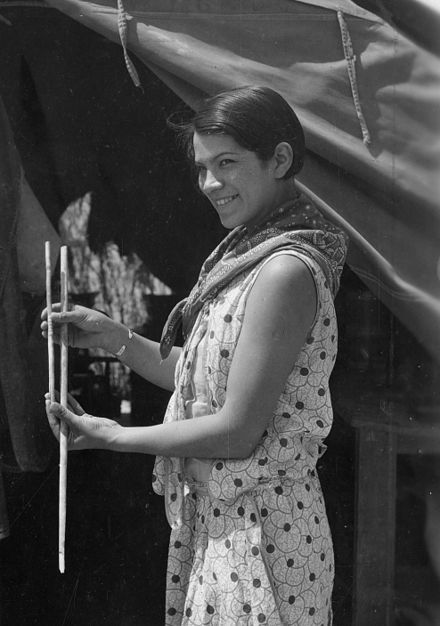
Bertha Parker Cody, born Bertha Yewas Parker, lived an incredibly nuanced life as an Indigenous women working in anthropology and archaeology during the early to mid 20th century.
*Her family history is (ngl) wild to say the least*
She was born in 1907 in New York to Beulah Tahamont (later Folsom) and Arthur C. Parker. Her mother was an actress that came from a family of actors. Her maternal grandmother was Margaret Dove Eye Camp and her grandfather was famous silent film actor and leader of the First Nations Abenaki tribe, Elijah Dark Cloud Tahamont.
Her father was of Seneca and Scottish-English descent, was educated as an archaeologist, and became the first president of the Society for American Archaeology (SAA).
*Now we don’t have time to unpack ALL of that so stay tuned for a future post on the life of Arthur C. Parker*
Birdie was married three times. After her first unhappy marriage to Joseph Pallan ended, she married paleontologist James E. Thurston who passed away in 1931. Then in 1936 she married actor Espera Oscar de Corti who was better known as an actor going by the name of “Iron Eyes Cody”.
*Now we REALLY don’t have time to unpack all of that so stay tuned for a future post on appropriation vs. appreciation and Indigenous visibility*
Her uncle was Mark Raymond Harrington, a curator of archaeology at the Southwest Museum in Los Angeles (now the Autry Museum of the American West) from 1931 to 1964. He hired Birdie as the camp cook, expedition secretary, and assistant archaeologist.
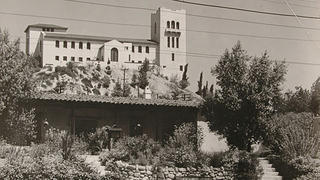
She assisted on various archaeological sites including Mesa house as well as the famous Gypsum Cave in Nevada. The site’s earliest human habitation was approximately 3000 BCE, and it was also at one point occupied by the now extinct Shasta ground sloth (Nothrotheriops shastensis) up until 11,000 BCE. Birdie was responsible for discovering a ground sloth skull and human tools in the cave’s room 3.
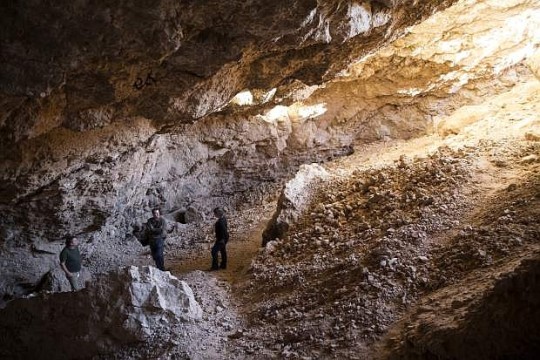
During the Gypsum Cave excavations, she also found the site of Corn Creek near Las Vegas, Nevada which contained the remains of the extinct North American camel species (Camelops hesternus). This site dates to approximately 5000 BCE.
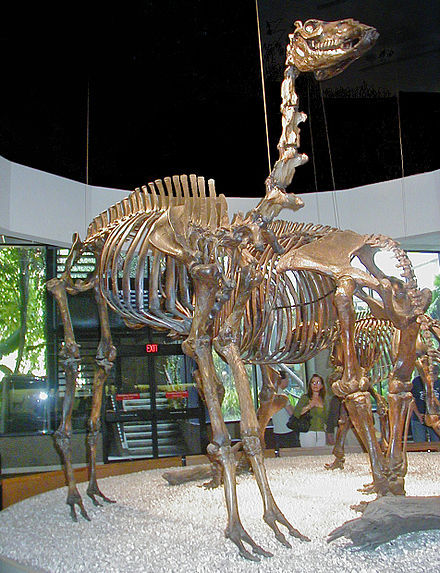
Birdie additionally worked as an archaeological assistant in the Southwest Museum and published her own anthropological and ethnographic work on Indigenous groups in California. These works included: “Some Yurok Customs and Beliefs” and "A Maidu myth of the first death; by Bertha Parker Cody, as related by Mandy Wilson of Chico, California”.
This kind of work by an Indigenous female archaeologist was incredibly important, especially in the early 20th century. Archaeology was quickly becoming a well-respected subject within academia and research. However, It was also almost completely dominated by white men who regarded themselves as the sole intellectual authorities within the field. Many tend to forget that elite academic knowldge is not a universal truth and not the only correct way of understanding the world.
Birdie was not educated in a formal academic institution, but this does not make her any less an incredible researcher, scholar, and archaeologist.
Her life is honestly a bit unfathomable to an onlooker from the 21st century, but her story is definitely an important one to know. She was a brilliant Indigenous woman and scientist at the center of American archaeology and anthropology.
Bridie died in 1978, and over 40 years later the Society for American Archaeology, with support from the Autry Museum of the American West, has announced the Bertha Parker Cody Award for Native American Women. Long overdue and a tad bit ironic given recent SAA news (Link to post: https://idigitpodcast.tumblr.com/post/649946268870819840/check-out-some-recent-news-in-archaeology-and) but wonderful nonetheless.
It is imperative in this current moment, especially in the United States, that archaeology is accessible to Indigenous viewpoints; and the field frankly needs more minds and perspectives like Bertha Parker Cody.
Refs:
“New Award Honors Bertha Parker Cody, First U.S. Native American Woman Archaeologist.” Society for American Archaeology, www.saa.org/quick-nav/saa-media-room/saa-news/2020/11/16/bertha-parker-cody-award.
“Bertha Parker Pallan.” Wikipedia, Wikimedia Foundation, 5 Apr. 2021, en.wikipedia.org/wiki/Bertha_Parker_Pallan.
“What Is the Autry?” Autry Museum of the American West, 11 Nov. 2020, theautry.org/about-us.
Bruchac, Margaret. "First Female Native Archaeologist." (2005).
Bruchac, Margaret M.. Savage Kin: Indigenous Informants and American Anthropologists. United States, University of Arizona Press, 2018.
“Bertha Parker Pallan Cody (1907-1978).” Smithsonian Institution, www.si.edu/es/object/bertha-parker-pallan-cody-1907-1978:siris_arc_306365.
“Bertha ‘Birdie’ Parker: TrowelBlazers.” TrowelBlazers Bertha BirdieParker Comments, trowelblazers.com/bertha-birdie-parker-also-known-as/.
---------------------------------------------------------------------------
About the podcast: The I Dig It Podcast was created by Alyssa and Michaela in March of 2020. Our goal for this podcast was to provide archaeology enthusiasts with insight into the student perspective of navigating the world of academia and the job market for archaeology and anthropology. Guests on the podcast include people from all different parts of their career, including highschool, undergrad, grad school, post doc, and early career!
Where to Find Us:
Insta: https://www.instagram.com/idigitpodcast/
Twitter: https://twitter.com/IDigItPodcast
Discord: https://discord.gg/T7BPe36
ArchPodNet: https://www.archaeologypodcastnetwork.com/idigit
How to get involved: Sign up to be a guest or to be featured on our social media pages ➡️ https://linktr.ee/idigitpodcast
#women in archaeology#women in science#women in anthropology#archaeology#science#history#cultural anthropology#ethnography#american archaeology#i dig it#podcast#archpodcastnetwork#ground sloth#extinct animals#gypsum cave#saa#indigenous#southwest archaeology#research#academia aesthetic#academia#native american#education#megafauna#extinct species#cultural resources#american west#anthropologie#anthropologist#archaeologist
114 notes
·
View notes
Text
Check out Some Recent News in Archaeology and Anthropology!
https://www.smithsonianmag.com/smart-news/archaeologists-discover-110-ancient-egyptian-tombs-along-nile-delta-180977612/
Exciting news from Egypt where 110 burials were announced to be uncovered in the Dakahlia governorate. The project, led by Dr. Sayed Al-Talhawi, was successful in discovering burials dating to both Predynastic Egypt (3300 BCE) and to the Hyksos dynasty which existed during the intermediate period between the Middle and New Kingdoms (1638-1530 BCE).
https://www.sciencemag.org/news/2021/04/archaeology-society-hosted-talk-against-returning-indigenous-remains-some-want-new
Some drama occurred (and is still occurring) in the realm of North American (specifically U.S.) archaeology. The Society for American Archaeology held a virtual conference from April 15th through 17th, which featured a session titled “Curation, Repatriation, and Accessibility: Vital Ethical Considerations”. However, a highly criticized presentation that argued against repatriation of Indigneous remains was given within this section of the annual meeting. This presentation was harmful for a number of reasons, but I want to bring attention to an idea from Dr. Kisha Supernant who has proposed that instead of changing a longstanding institution, a new Society for Engaged Archaeology (working name) would be more beneficial!
https://www.inquirer.com/news/move-bombing-victim-remains-penn-philadelphia-princeton-20210421.html
This is a much more serious article that covers the ethical quandaries of studying human remains. On May 13th, 1985 the MOVE (a Black organization within the larger Black Power movement that focused on advocating for Anarcho-primitivist philosophes) townhouse was bombed by the Philadelphia Police Department. Six MOVE members and five of their children were killed in the siege. One set of remains, likely belonging to 14 year old Katricia Dotson, was given to a professor at the University of Pennsylvania. In subsequent years these remains were not returned to surviving family or community members, but were instead used in forensic anthropology classes at Princeton University.
http://www.sci-news.com/archaeology/oldowan-wonderwerk-cave-09597.html
More exciting archaeological news from the eastern Kuruman Hills region of South Africa. Dr. Ron Shaar and his colleagues conducted analysis on artifacts and sediment samples from Wonderwerk Cave. This research concluded that the cave was likely occupied approximately 1.8 million years ago by Early Modern Humans who utilized Oldowan stone tools.
Stay tuned for many more upcoming posts about hot topics in anthropology and archaeology, biographies of pioneering researchers, and summaries of I Dig It episodes!
---------------------------------------------------------------------------
About the podcast: The I Dig It Podcast was created by Alyssa and Michaela in March of 2020. Our goal for this podcast was to provide archaeology enthusiasts with insight into the student perspective of navigating the world of academia and the job market for archaeology and anthropology. Guests on the podcast include people from all different parts of their career, including highschool, undergrad, grad school, post doc, and early career!
Where to Find Us:
Insta: https://www.instagram.com/idigitpodcast/
Twitter: https://twitter.com/IDigItPodcast
Discord: https://discord.gg/T7BPe36
ArchPodNet: https://www.archaeologypodcastnetwork.com/idigit
How to get involved: Sign up to be a guest or to be featured on our social media pages ➡️ https://linktr.ee/idigitpodcast
#archaeology#anthropology#ethics#forensic#history#archaeolgist#anthropologist#women in archaeology#egypt#egyptology#ancient history#oldowon#early modern human#idigit#i dig it#scientists#science#south africa#black power movement#social science#podcast#forensic anthropology#stone age#repatriation#prehistory#education#american anthropology#american archaeology#research#predynastic egypt
9 notes
·
View notes
Text
Women in Anthropology: CAROLINE BOND DAY
Caroline Bond Day was an African-American physical anthropologist and writer whose work served to break down racist stereotypes of Black and mixed-race individuals during the early 20th century.

Day was born in 1889 in Montgomery, Alabama to Georgia and Moses Steward. She was considered mixed-race and had Black, White, and Indigenous heritage.
She received her first BA at Atlanta University in 1912. She then studied physical anthropology at Radcliffe college (pictured below: Fay House and Gym, circa 1904), the female counterpart to the (at the time) all-male Harvard, and earned her second BA in 1919.

After graduating she had careers in various community and education related jobs such as: working with and supporting black veterans and their families, working as the Dean of Women at Paul Quinn College, and then heading the English department at Prairie View State College. She then began teaching at her alma mater, Atlanta University in 1922 and started publishing short stories and essays.
One of her most famous works “The Pink Hat” is a narrative about a Mulatto woman undergoing a journey toward understanding the nuances of her mixed-race heritage through a social experiment centered around her white-passing skin tone. Ultimately, after realizing that society and people will always treat her as inferior once they recognize the traits of her blackness (demonstrated by her hair previously concealed by wearing a pink hat) the protagonist decides to fully embrace her identity as an African American woman.
After leaving Atlanta University in 1929, she started focusing on her own research with advisor Earnest Hooton and graduated with an MA in anthropology in 1932. In the same year she published her most renowned anthropological work and thesis “A Study of Some Negro-White Families in the United States.”
In this study, Day analyzed 346 mixed-race families confirmed to have Black and White ancestry (Example of the Brown-Wilkins family pictured below from Bond’s study). She utilized the methodologies of physical, biological, and sociocultural anthropology in order to better understand the experience of mixed-raced individuals in America. In the tradition of physical anthropology she still took physical measurements of her participants. By doing this she used the language and understanding of white male anthropologists to help disprove myths that African American individuals were physically and socially inferior to white Americans

Her ideology was influenced by minds such as W. E. B. Du Bois and Franz Boas, famous thinkers and academics working in the fields of sociology and anthropology respectively. These ideologies were not without their flaws and ideas of categorization of race based on physical assessments are not relevant in current anthropology. Anthropologists, sociologists, and anyone who studies race recognizes that the concept is much more complex and difficult to understand especially within our own contemporary moment.
Day occupied a privileged position as a member of the Harvard anthropology academic circle and as a part of the broader middle and upper classes of the African-American community. Recognizing this, her intentions with her research were to confront the racist history of anthropology and use outdated methodologies as tools in positively changing the academic narrative of black lives.
Toward the end of her life Day continued to teach at schools such as Howard University (Pictured below) and at North Carolina College for Negroes. She died in 1939 of heart illness, the same year she started her final appointment at an academic institution.

Her achievements and contributions to the field of anthropology are extremely important, especially as a black female voice within a discipline that has been incredibly racist toward black people since its inception. However, Day’s legacy as an educator is an aspect of her life that should be celebrated as well.
There is no shortage of male perspectives in the early years of the field of anthropology, and having a black female teacher to offer alternative ways of knowing and understanding is crucial in the development of a new generation of academics and thinkers. These are the kinds of people who go forth to reshape the boundaries of academic knowledge. People like Caroline Bond Day were, and are still, necessary within all subfields of anthropology and social sciences as a whole.
Refs:
“Caroline Bond Day (1889-1948).” Association of Black Anthropologists - ABA Is a Section of the American Anthropological Association, aba.americananthro.org/caroline-bond-day-1889-1948/.
Caroline Bond Day. 23 Feb. 2021, en.wikipedia.org/wiki/Caroline_Bond_Day.
Curwood, Anastasia C. “Caroline Bond Day (1889–1948): A Black Woman Outsider Within Physical Anthropology.” AnthroSource, John Wiley & Sons, Ltd, 13 Mar. 2012, anthrosource.onlinelibrary.wiley.com/doi/10.1111/j.1548-7466.2011.01145.x.
Musser, Judith. “African American Women's Short Stories in the Harlem Renaissance: Bridging a Tradition.” MELUS, vol. 23, no. 2, 1998, pp. 27–47. JSTOR, www.jstor.org/stable/468010. Accessed 30 Mar. 2021.
Heidi Ardizzone (2006) ‘Such fine families’: photography and race in the work of Caroline Bond Day, Visual Studies, 21:2, 106-132, DOI: 10.1080/14725860600944971
---------------------------------------------------------------------------
About the podcast: The I Dig It Podcast was created by Alyssa and Michaela in March of 2020. Our goal for this podcast was to provide archaeology enthusiasts with insight into the student perspective of navigating the world of academia and the job market for archaeology and anthropology. Guests on the podcast include people from all different parts of their career, including highschool, undergrad, grad school, post doc, and early career!
Where to Find Us:
Insta: https://www.instagram.com/idigitpodcast/
Twitter: https://twitter.com/IDigItPodcast
Discord: https://discord.gg/T7BPe36
ArchPodNet: https://www.archaeologypodcastnetwork.com/idigit
How to get involved: Sign up to be a guest or to be featured on our social media pages ➡️ https://linktr.ee/idigitpodcast
#women in science#women in anthropology#women in academia#anthropology#archaeology#ethnography#social science#history#black history#women of color#education#womens history month#womens history#anthropologist#english#women in writing#writing#podcast#podcasters of tumblr#archaeology podcast network#american history#research
313 notes
·
View notes
Text
Women in Anthropology: ZELIA MARIA MAGDALENA NUTTALL
Zelia Nuttall was a Mexican-American archaeologist, ethnohistorian, and linguist known for challenging the existing perceptions and narratives of Indigenous -Mexican history and archaeology during the late 19th and early 20th centuries.
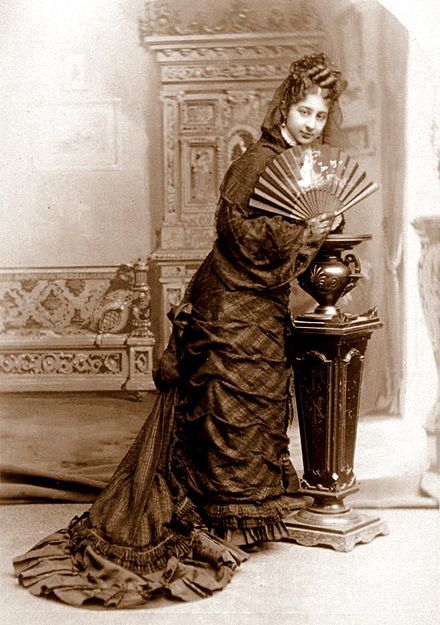
She was born in San Francisco in 1875 to a Mexican born mother and an Irish father. She grew up in relative wealth and was educated at Bedford College in London. In Europe she cultivated her language abilities, especially in Spanish, German, and Russian. She married a French archaeologist and had a daughter, but divorced him in 1888 and turned her focus on her own career.
Nuttall began working for the National Museum of Anthropology, in Mexico City in 1884. It was here where she started studying the site of Teotihuacan and centered her research on small terracotta heads. She was able to date these to the Aztec period (1345-1521 CE), and determine that they were likely representations of deceased individuals (pictured below from her work "The Terracotta Heads of Teotihuacan"). This work eventually led to her receiving a position within the Peabody Museum of Archaeology and Ethnology at Harvard.
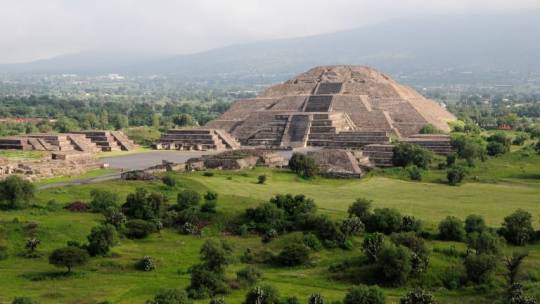
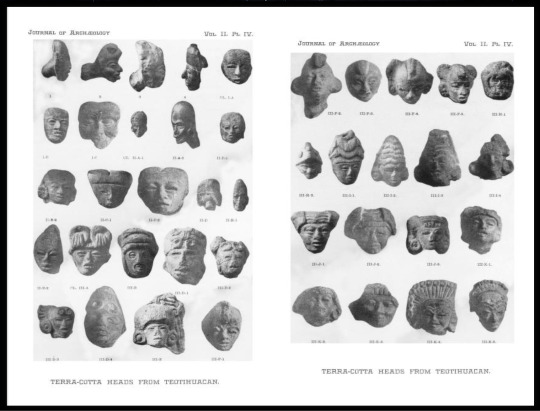
During the 1890s she became good friends with renowned patron of anthropology, Phoebe Hearst who is well known for being the namesake of the UC Berkeley Phoebe A. Hearst Museum of Anthropology. Hearst became a benefactor for Nuttall and often helped to fund her research.
Nuttall permanently moved to Mexico in 1902 and started working on pre-columbian manuscripts. Her most prominent work was on the Codex Zouche-Nuttall, a 14th century Mixtec manuscript that she helped to translate and analyze (pictured below). This codex was a facsimile, or recreation, of the actual deerskin book and it contained many scenes and narrative of Mixtec religion and culture.
*Brief aside: It is important to note that almost almost all the words that describe Indigenous peoples in the Americas (including the term America named for Italian explorer Amerigo Vespucci) are rooted in a colonial history. Terms such as ‘pre-columbian’ or ‘Latin-American’ are quite widely used throughout all academic literature, but it is still important to acknowledge their origins and understand why they can be problematic.

Nuttall strove to be an advocate for Indigenous Mexican traditions and worked to change their perceptions in archaeology. In 1928, Mexico held its first celebration of the Indigenous New Year since 1519. She passed away 5 years later in Coyoacán, Mexico.
Anthropology has a large history of racist methodologies and the common narrative toward pre-contact Mexican cultures cast Indigenous peoples as ‘savages’. While many white anthropologists and archaeologists of the time viewed Native Mexican peoples and cultures as “primitive”, Nuttall understood them as equals and as people that were intelligent and complex.
It is necessary to note that her ideology is flawed and born out of a 19th century mindset. She thought about her archaeological work in an idealized and romantic way, championing the concept that all humans can share and benefit from the shared heritage of Ancient Mexico. While the sentiment is nice, it is important to remember that it is generally not the place of western scientists to have autonomy over the knowledge of ancient cultures. It is disrespectful to try and push this type of universal narrative, and instead Indigenous communities and peoples should have their own decisions on the knowledge of their ancestral cultures.
That being said, there is something incredibly important in the way anthropology and archaeology is articulated through the perspective of a woman of color. Zelia Nuttall diverged from the traditional way her male contemporaries viewed the ancient Mexican cultures and she was revolutionary in the field of Mexican archaeology. Though some of her ideologies are outdated now, she was essential in changing the legacy of colonist mindsets toward Indigenous cultures.
Refs:
TOZZER, ALFRED M. "ZELIA NUTTALL". American Anthropologist, vol 35, no. 3, 1933, pp. 475-482. Wiley, doi:10.1525/aa.1933.35.3.02a00070. Accessed 23 Mar 2021.
"The Archaeologist Who Helped Mexico Find Glory In Its Indigenous Past". Smithsonian Magazine, 2021, https://www.smithsonianmag.com/science-nature/archaeologist-who-helped-mexico-find-glory-its-past-180970700/.
Nuttall, Zelia. "The Terracotta Heads Of Teotihuacan". The American Journal Of Archaeology And Of The History Of The Fine Arts, vol 2, no. 2, 1886, p. 157. JSTOR, doi:10.2307/495843.
"Zelia Nuttall - Wikipedia". En.Wikipedia.Org, 2021, https://en.wikipedia.org/wiki/Zelia_Nuttall.
"Codex | British Museum". The British Museum, 2021, https://www.britishmuseum.org/collection/object/E_Am1902-0308-1.
"Zelia Nuttall – Phoebe A. Hearst Museum Of Anthropology". Phoebe A. Hearst Museum Of Anthropology, 2021, https://hearstmuseum.berkeley.edu/zelia-nuttall/.
---------------------------------------------------------------------------
About the podcast: The I Dig It Podcast was created by Alyssa and Michaela in March of 2020. Our goal for this podcast was to provide archaeology enthusiasts with insight into the student perspective of navigating the world of academia and the job market for archaeology and anthropology. Guests on the podcast include people from all different parts of their career, including highschool, undergrad, grad school, post doc, and early career!
Where to Find Us:
Insta: https://www.instagram.com/idigitpodcast/
Twitter: https://twitter.com/IDigItPodcast
Discord: https://discord.gg/T7BPe36
ArchPodNet: https://www.archaeologypodcastnetwork.com/idigit
How to get involved: Sign up to be a guest or to be featured on our social media pages ➡️ https://linktr.ee/idigitpodcast
#women in archaeology#womens history month#women in science#anthropology#archaeology#cultural anthropology#ethnography#lingustics#mexican-american#women of color#history#mexican history#mixtec#aztec#archaeologypodcastnetwork#research#archaeologist#archaeologylovers#womens history#herstory#ethnohistory#anthropologist
304 notes
·
View notes
Text
Women in Anthropology: GERTRUDE MARGARET LOWTHIAN BELL
As all fellow anthropologists are aware, humans are incredibly complex and oftentimes imperfect beings. Though Gertrude Bell had a complicated role in politics, she is an unquestionably important and a truly captivating female figure in academica and in anthropology.
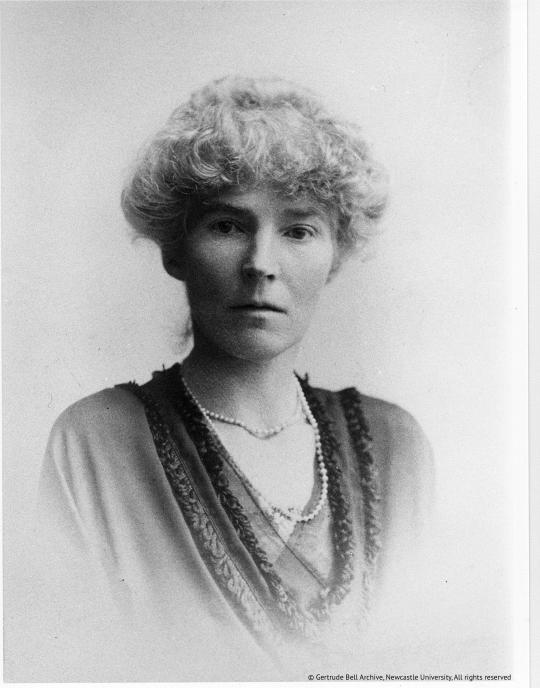
Gertrude Bell was born to a wealthy English family in Washington, England in 1868. During her education she specialized in history and was one of the first 2 women, alongside fellow historian Alice Greenwood, to graduate from the University of Oxford. It is important to note that while both women graduated with honors, Oxford did not award them with degrees and they were not recorded alongside their 9 male classmates.
Following University, she began her travels in Persia. She picked up extensive language skills and spoke German, Persian, French, Arabic, Italian, and several Ottomon languages. It was during this time of traveling throughout regions in the Middle East that she developed an interest in archaeology.
In 1907 she began work with archaeologists Sir William M. Ramsay within the Ottoman Empire (the modern-day region of South-central Turkey), on the site Binbirkilise (pictured below) (translated from Turkish as “thousand and one churches”). Through 1909 Bell also participated in archaeological recording and mapping of ruins in Syria, near the Upper East bank of the Euphrates, as well as the ruins of Ukhaidir in the city of Carchemish. In 1924 she completed her final archaeological field work with Edward Chiera in ancient Nuzi, Iraq where they excavated Assyrian clay tablets.
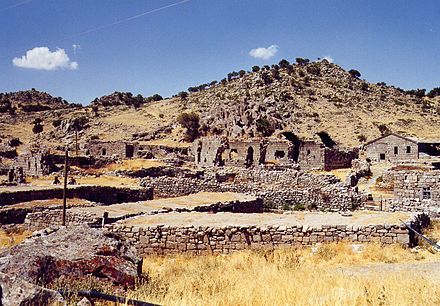
Bell also had an extensive political career, and her fluency in multiple languages allowed her to become an incredible asset to international British relations in regions such as Cairo, Egypt and in Iraq. She is also a notable witness to the Armenian genocide of 1915-1916 and contributed testimony that aided in spreading information about the atrocities committed. In 1921 she was apart of a British-led conference determining the future boundaries of Iraq (pictured below); this was only one chapter in a larger narrative of British imperialism in the Middle East
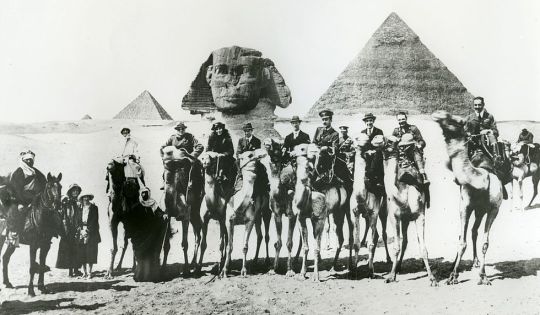
****CW/TW: Themes of suicide and substance abuse****
In the year of her death, Bell helped to establish the The Baghdad Archaeological Museum (now the Iraq Museum) in 1926. Her death came after a series of financial and health issues and the passing of her brother. She was determined to have taken an overdose of sleeping pills, and while it is officially unclear whether or not she intended to end her life, her mental health issues are still an important part of her story.

While Gertrude Bell’s success should be contextualized within her privileged position as a wealthy white woman, this should not diminish any of her accomplishments. She made significant contributions to archaeological research, and held her own in a political stage surrounded only by men. At the same time, she was of the late 19th and early 20th century era and likely did not think to check or understand her privilege and positions of power. Ultimately, her legacy, though complex, is that of a brilliant woman and a crucial figure within the discipline of archaeology.
Refs:
"Gertrude Bell". Biography, 2021, https://www.biography.com/writer/gertrude-bell.
"Gertrude Bell - Wikipedia". En.Wikipedia.Org, 2021, https://en.wikipedia.org/wiki/Gertrude_Bell.
Howell, Georgina. Gertrude Bell: Queen of the desert, shaper of nations. Farrar, Straus and Giroux, 2010.
"About The Museum | The Iraq Museum". Theiraqmuseum.Com, 2021, https://www.theiraqmuseum.com/pages/about-the-museum.html.
"British Colonialism, Middle East | Encyclopedia.Com". Encyclopedia.Com, 2021, https://www.encyclopedia.com/history/encyclopedias-almanacs-transcripts-and-maps/british-colonialism-middle-east
---------------------------------------------------------------------------
About the podcast: The I Dig It Podcast was created by Alyssa and Michaela in March of 2020. Our goal for this podcast was to provide archaeology enthusiasts with insight into the student perspective of navigating the world of academia and the job market for archaeology and anthropology. Guests on the podcast include people from all different parts of their career, including highschool, undergrad, grad school, post doc, and early career!
Where to Find Us:
Insta: https://www.instagram.com/idigitpodcast/
Twitter: https://twitter.com/IDigItPodcast
Discord: https://discord.gg/T7BPe36
ArchPodNet: https://www.archaeologypodcastnetwork.com/idigit
How to get involved: Sign up to be a guest or to be featured on our social media pages ➡️ https://linktr.ee/idigitpodcast
#women in anthropology#women in archaeology#womens history month#iwd21#archaeology#archaeologist#anthropologist#women in science#history#middle eastern history#archaeology podcast#podcast#ethnography#politics#british history#education#archaeologypodcastnetwork#ancient archaeology#ancient assyria#ottoman empire#museum
136 notes
·
View notes
Text
Women in Anthropology: MARGARET ALICE MURRAY
In the 100 years Margaret Murray was on this Earth she became a driving force for women in anthropology and in academia, earning the titles of archaeologst, Egyptologist, author, lecturer, Folkorist, and feminist.
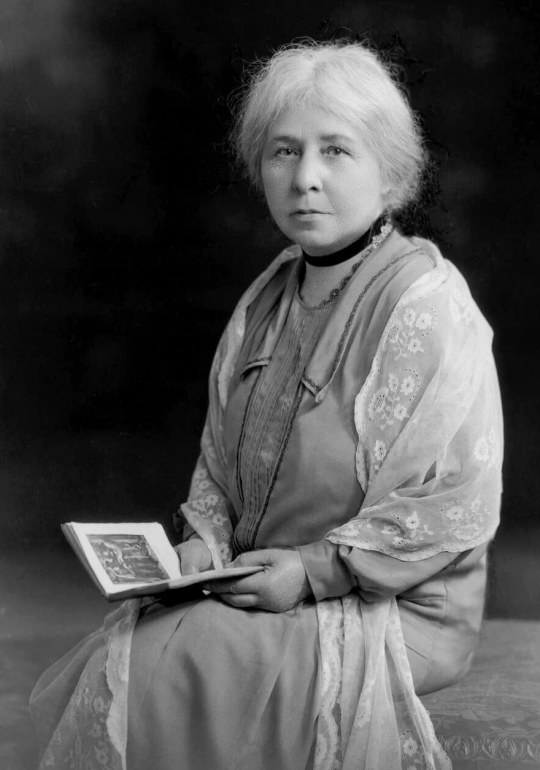
Murray was born to wealthy English parents in Calcutta, India in 1863. She spent her early years living in Britain and Germany before settling back in India as a nurse until 1887 when she moved to England and became a social worker.
She began attending the University College London (UCL) at the age of 31 in 1894 (proving that there is no set age to being your academic career) and by 1898 she was working as a junior lecturer of linguistics in the Egyptology department.
In 1902 she joined British Egyptologist Sir William Flinders Petrie for 2 field seasons in Egypt. During the first field season she helped to excavate a temple to Osiris, the Osireion, built during the New kingdom (roughly 16th to 11th century BCE) under the Pharaoh Seti I (pictured below).
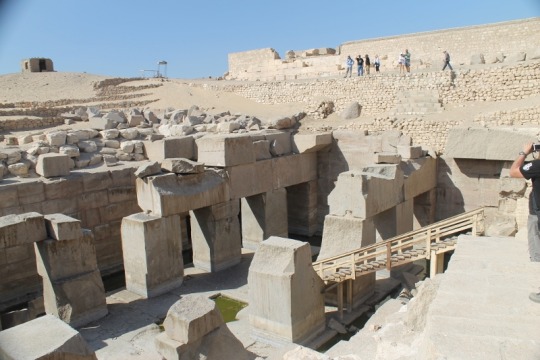
After returning to London, she became a big supporter of the first wave feminist movement and joined the Women’s Social and Political Union. Murray initiated many campaigns to change the culture for women in academia and make it more accessible. At her insistence for inclusivity, the UCL common room was opened to women and later a redesigned room was constructed and named the Margaret Murray Room.
During World War I, she began studying and publishing articles and books on the history of witchcraft in Europe and Folklorism. Eventually, in 1927 she was awarded an honorary doctorate for her work in Egyptology. Throughout her career she wrote several books and many articles on Egyptology, Folklorism and also authored her own autobiography titled “My First Hundred Years” published in the year of her death 1963.
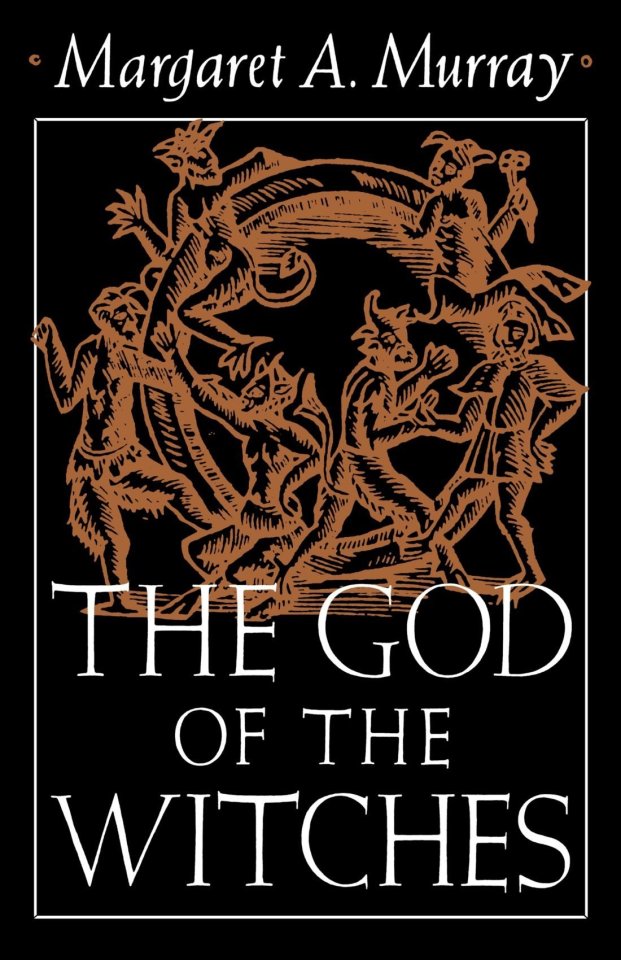
It is challenging for modern day academics to truly comprehend the different era and culture for a woman in anthropology during the late 19th to mid-20th centuries. Although, I am sure many of us agree that the academic climate of today oftentimes has much more progress to make. In any case, Margaret Murray was one of the first women to ‘make it’ within this scientific field dominated by a white men, and her contributions to academia were significant, well known, and respected.
However, this does not mean she was perfect. Much of her academic work and theory, especially in the field of Folklorism, is often criticized. Anthropology has changed quite a bit since Murray first entered the field over 158 years ago, and our views and methods of understanding are extremely different today.
What will not change is Murray’s solidified importance as an academic mind and as a woman in archaeology. She paved the way for other female scholars, and she fought for their advancement and their voices along the way.
Refs:
Drower, Margaret S. (2004). "Margaret Alice Murray". In Getzel M. Cohen; Martha Joukowsky (eds.). Breaking Ground: Pioneering Women Archaeologists. Ann Arbor: University of Michigan Press. pp. 109–141
Margaret Murray. (n.d.). Retrieved March 16, 2021, from https://www.fembio.org/english/biography.php/woman/biography/margaret-murray/
Margaret Murray. 25 Feb. 2021, en.wikipedia.org/wiki/Margaret_Murray.
"Margaret Murray". Stories From The Museum Floor, 2021, https://storiesfromthemuseumfloor.wordpress.com/2018/03/02/margaret-murray/.
---------------------------------------------------------------------------
About the podcast: The I Dig It Podcast was created by Alyssa and Michaela in March of 2020. Our goal for this podcast was to provide archaeology enthusiasts with insight into the student perspective of navigating the world of academia and the job market for archaeology and anthropology. Guests on the podcast include people from all different parts of their career, including highschool, undergrad, grad school, post doc, and early career!
Where to Find Us:
Insta: https://www.instagram.com/idigitpodcast/
Twitter: https://twitter.com/IDigItPodcast
Discord: https://discord.gg/T7BPe36
ArchPodNet: https://www.archaeologypodcastnetwork.com/idigit
How to get involved: Sign up to be a guest or to be featured on our social media pages https://linktr.ee/idigitpodcast
#women in science#anthropology#archaeology#history#womens history#women in archaeology#cultualanthropology#egypt#egyptology#margaret murray#Folklorism#feminist history#archaeologypodcastnetwork#womens history month#science#archaeology podcast#anthropologist#witchcraft#podcasts#ethnography
663 notes
·
View notes
Photo

Happy International Women’s Day!!
This month we wanted to highlight some of the incredible women that were, and still are, pioneers in the field of anthropology. This is by no means a comprehensive list and there are countless other women both past and present who have fundamentally changed the way we think about and understand the world! 🌟💖
Margaret Murray 1863-1963, Anglo-Indian Archaeologist
Gertrude Bell 1868-1926, English Archaeologist and Writer
Zelia Nuttall 1875-1933, Mexican-American Archaeologist
Margaret Mead 1901-1978, American Cultural Anthropologist
Dorothy Garrod 1892-1968 English Archaeologist
Caroline Bond Day 1889-1948, African-American Anthropologist and Author
Bertha Parker Pallan 1907-1978, Native American Archaeologist
Zora Neale Hurston 1891-1960, African-American Anthropologist and Ethnographer
Reina Torres de Araúz 1932-1982, Panamanian anthropologist and ethnographer
Chie Nakane b. 1926, Japanese Anthropologist and Professor emerita at the the University of Tokyo
Where to Find Us:
Insta : https://www.instagram.com/idigitpodcast/
Twitter: https://twitter.com/IDigItPodcast
ArchPodNet: https://www.archaeologypodcastnetwork.com/idigit
Get Involved with I Dig It here ➡️https://linktr.ee/idigitpodcast
#anthropology#internationalwomensday#archaeology#archaeologist#iwd21#ethnography#cultural anthropology#womeninanthropology#women in science#podcast#archaeologylovers#women of color#history#archaeology podcast#womenofcolor#historicarchaeology#prehistoricarchaeology#anthropologist#womenshistorymonth
82 notes
·
View notes
Photo
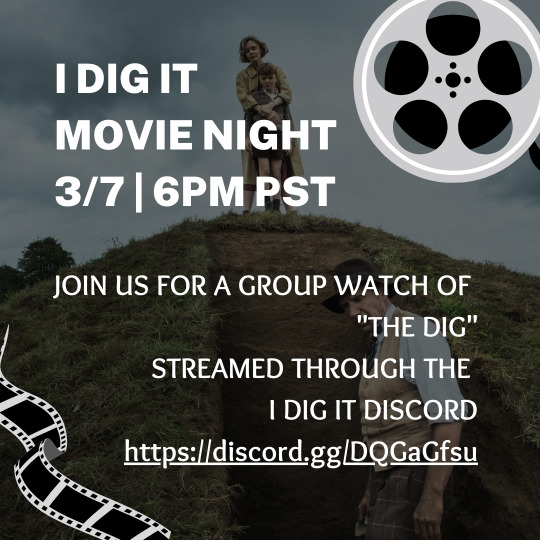
Join us on Sunday for a stream and live react of "The Dig"! 🍿Following the stream we will be recording a podcast episode of our thoughts! 🎬Feel free to join in on the conversation! 😆Discord: https://discord.gg/DQGaGfsu
Where to Find Us:
Insta : https://www.instagram.com/idigitpodcast/
Twitter: https://twitter.com/IDigItPodcast
ArchPodNet: https://www.archaeologypodcastnetwork.com/idigit
Get Involved with I Dig It here ➡️https://linktr.ee/idigitpodcast
#archaeology#history#women in anthropology#anthropology#cultural anthropology#movienight#women in science#thedig#archaeologist#historical archaeology#archaeologylovers#anthropologist#archaeologylab#womeninarchaeology#archaeologygrads archaeologypodcastnetwork
8 notes
·
View notes
Text
Introduction to the I Dig It Podcast Blog!
About the podcast:
The I Dig It Podcast was created by Alyssa and Michaela in April of 2020. Our goal for this podcast was to provide archaeology enthusiasts with insight into the student perspective of navigating the world of academia and the job market for archaeology and anthropology. Guests on the podcast include people from all different parts of their career, including highschool, undergrad, grad school, post doc, and early career!
About the Hosts:

About Alyssa! (she/they): Hello, folx! I’m one of the co-hosts of the podcast and I’m super excited for you to be joining us! I’m a current Ph.D. student in Anthropology (Archaeology track) doing research on the medeival Khmer Empire of Cambodia! My archaeological interests are human-environmental relationships and political ecology, and I enjoy using digital methods for archaeological analysis, such as remote sensing data and GIS. Find my archaeology IG at ✨ @aal.archaeology ✨
About Michaela! (she/her): Hey there! Welcome to the channel! Founder and co-host of the podcast and I’m enthralled to see you finding us! It’s been my dream to create as well as be in a community filled with people of similar passions whether you’re in the field or not. I’m a Digital Archaeologist specializing in VR, AR, 3D modeling with aspirations of creating an online presence for archaeological and heritage sites to be engaged with by all. Currently working in CRM (in California) and always seeking to expand my knowledge.
About Izzie! (she/her): Hello all! I am new to the team as a project assistant helping with fostering engagement by creating blog posts and advertising for the I Dig It podcast! I love spending my time in the dusty basements of museums or bushwhacking out in the field for CRM. I am a future archaeology MA student and my interests are in historical archaeology!
Where to Find Us:
Insta 📷 : https://www.instagram.com/idigitpodcast/ Twitter 🐦 : https://twitter.com/IDigItPodcast Discord💬 : https://discord.gg/T7BPe36 ArchPodNet: https://www.archaeologypodcastnetwork.com/idigit
How to get involved:
Sign up to be a guest or to be featured on our social media pages ➡️ https://linktr.ee/idigitpodcast
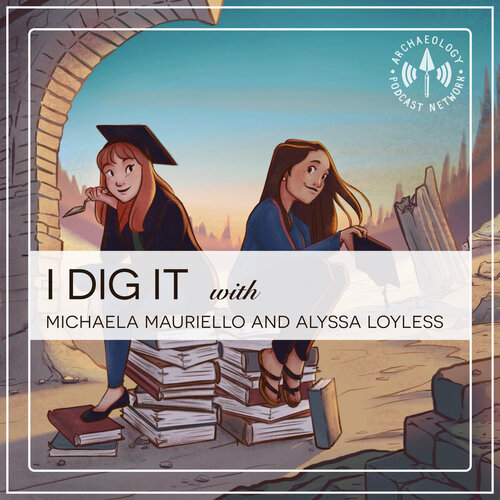
#archaeology#history#anthropology#historical#women in science#women in anthropology#arch#archaeologylab#podcast#research#education#archaeologypodcastnetwork#podcasters#podcastersofinstagram#archaeology lovers#classical archaeology#historical archaeology#archeology#cultural anthropology#archaeology podcast#prehistoric archaeology#archaeologists
137 notes
·
View notes